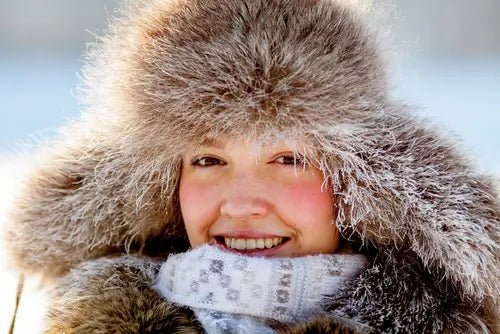Winter skin care differs from other seasons of the year mainly due to specific weather conditions that affect our skin.
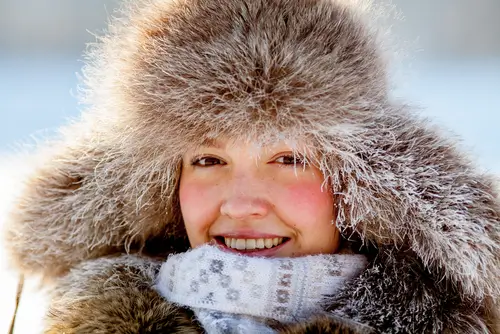
In winter, we should protect our skin from low temperatures, frost, and wind. Winter skin tends to dry out due to extreme conditions such as frost, low humidity, and wind. Therefore, at this time of year, we use more nourishing and protective cosmetics, such as creams with natural lipids like shea butter, vegetable oils, or plant waxes.
Low humidity, both outdoors and in heated rooms, causes skin to dry out more quickly. That's why it's so important to moisturize your skin in winter and use cosmetics that help retain water, such as products with hyaluronic acid, glycerin, or ceramides.
Although the sun is weaker, UV radiation reflected by snow is more intense. High levels of facial sun protection are essential during winter activities in sunny conditions.
Skin needs to be strengthened in winter. Frost and wind weaken the hydrolipid barrier. So, choose products that strengthen the protective barrier, such as those with ceramides or panthenol.
In winter, avoid irritating cosmetics. Exfoliating products, such as those with high concentrations of acids or retinoids, can further irritate the skin in frosty conditions. Use them with caution or opt for non-irritating H10 retinol and gentle acids. How to care for your skin in winter? Find cosmetics with the best ingredients for this time of year.
How to moisturize your face in winter?
The main moisturizing ingredients are hyaluronic acid, glycerin and trehalose.
winter skin care with hyaluronic acid
Hyaluronic acid binds water to the skin, preventing it from drying out. It's a valuable ingredient in winter skincare, but its proper use is crucial. Combining it with occlusive creams and properly moisturizing the skin allows you to utilize its properties without risking dehydration in dry, winter conditions.
Hyaluronic acid is hygroscopic, meaning it attracts and binds water molecules from the environment and deeper layers of the skin. In humid conditions, it works effectively by retaining water on the skin's surface, improving hydration.
Winter air is often dry, both outdoors (frost) and indoors (heated rooms). In these conditions, water from the deeper layers of the skin is drawn to the surface, which in extreme cases can lead to skin dehydration. Therefore, it's important to support hyaluronic acid with ingredients that have a similar effect, such as trehalose.
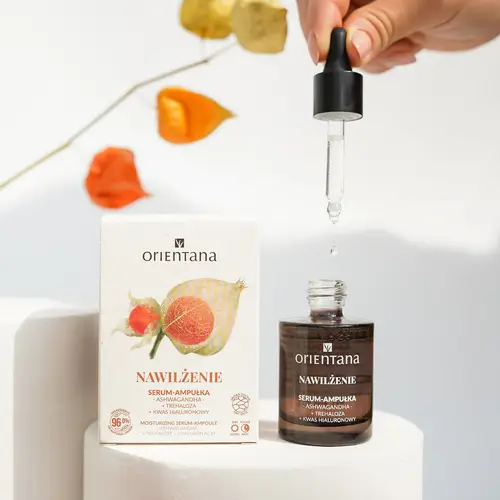
Choosing products with a higher molecular weight of hyaluronic acid (e.g., high molecular weight) can help retain moisture on the skin's surface rather than drawing it from deeper layers. Therefore, it's worth reaching for products
Hyaluronic acid used alone can dry out the skin by drawing water out of the epidermis (it strongly binds water molecules), so it should be applied with occlusive substances (also known as film-forming substances), such as oils.
For hyaluronic acid to work effectively, it's best to apply it to slightly damp skin, for example, after cleansing or toning your face. After applying a hyaluronic acid product, it's recommended to apply a layer of occlusive cream, such as one with shea butter, ceramides, or squalane. Look for products with these ingredients .
Glycerin in winter skin care
Glycerin in winter cosmetics strongly moisturizes, creating a protective film on the skin.
Glycerin, also known as glycerol, is a versatile ingredient used in cosmetics. Glycerin is a humectant—it attracts moisture from the environment and retains it in the skin. There are several types of glycerin, depending on its source and production method.
Vegetable glycerin is produced by hydrolyzing plant fats such as palm, coconut, or soybean oil. It is typically highly purified and used in vegan and oil-free cosmetic products.
Animal glycerin is produced by the hydrolysis of animal fats such as lard or tallow.
It can be as high as vegetable glycerin if processed properly.
However, it is being used less and less in cosmetics due to the growing popularity of vegan alternatives. It is used in soap production using the traditional glycerin soap production method.
Synthetic glycerin is one of the options used in cosmetics, but its use is much less common compared to plant and animal glycerin. It is derived from petrochemical raw materials, such as propylene glycol, and other organic compounds through chemical synthesis.
Why Trehalose Is Perfect for Winter
Trehalose, a sugar naturally found in plants, fungi, yeast, and bacteria, is gaining increasing popularity in cosmetics, especially in winter products. Its unique protective and moisturizing properties make it an excellent skincare ingredient for harsh weather conditions.
Trehalose protects the skin from environmental stress. It has the ability to protect cells from damage caused by frost, dry air, and temperature changes. It creates a protective barrier on the skin's surface, protecting it from moisture loss and harmful environmental influences.
Trehalose has powerful moisturizing properties. It binds water molecules in the skin, maintaining proper hydration even in dry, winter conditions. It prevents skin dryness, a common problem in the winter.
It protects the skin from free radicals, which can be activated by winter smog and UV radiation (even in winter). This action slows down the skin's aging process.
Trehalose also supports epidermal regeneration, which is important for skin irritations caused by frost or wind. It has a soothing effect, reducing redness and skin roughness.
How to use the trehalose serum ampoule in winter?
It's best to apply it to slightly damp skin to increase its ability to retain water. After applying the trehalose serum, it's best to protect the skin with an occlusive cream to increase its protection from external factors.
In dry, heated rooms, daily use of the trehalose ampoule serum helps maintain the appropriate level of skin hydration throughout the winter.
How to regenerate your skin in winter?
Ingredients like vegetable butters and oils are essential for nourishing and regenerating skin in winter. Oils and butters are essential in winter cosmetics, as they not only help protect the skin from harsh weather conditions but also moisturize and regenerate. Thanks to their diverse properties, they can be adapted to all skin types, from dry to oily. Regular use of cosmetics containing vegetable oils and butters ensures a healthy, moisturized, and protected appearance of the skin throughout the winter. A regenerating ingredient worth mentioning is D-panthenol.
Winter skincare should therefore include rich creams with shea butter. This butter contains a large amount of vitamins and fatty acids that regenerate the skin. Also known as karite , it is one of the most popular ingredients used in winter cosmetics. Shea butter is irreplaceable in winter care, especially in protecting the skin from harsh weather conditions.
Why are cocoa butter and shea butter perfect for winter?
It has powerful regenerative properties. It doesn't clog pores, making it suitable for most skin types. It's rich in vitamins A and E , which support epidermal regeneration. It helps heal micro-damage, irritation, and chapped skin, which are common problems in winter. It contains unsaturated fatty acids (oleic and stearic acids), which perfectly moisturize and nourish the skin. Ideal for dry and dehydrated skin.
Shea butter has natural soothing properties that reduce redness and soothe skin irritated by frost and changing temperatures.
Another great ingredient for winter is cocoa butter. Why use creams with cocoa butter in winter? It creates an occlusive layer on the skin, protecting against cold and wind. It intensively nourishes and smooths, and the addition of plant oils helps retain moisture and protects against the cold.
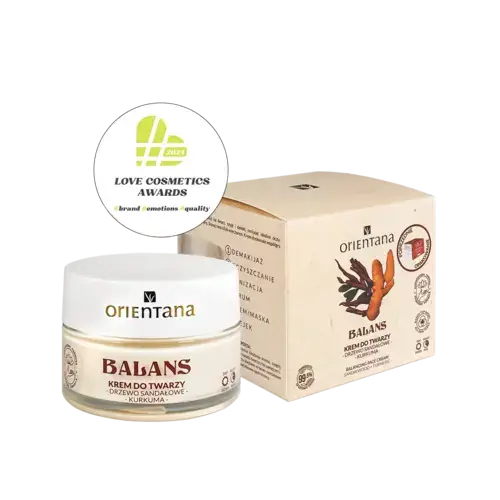
Cosmetics containing butters act as a natural occlusion, creating a protective layer on the skin's surface that prevents moisture loss and protects against the effects of wind, frost and dry air.
Creams with butters in their composition that are worth considering are the Sandalwood and Turmeric Face Cream and the Ashwagandha Face Cream.
In winter, the skin likes cosmetics with oils in their composition
Vegetable oils are an excellent ingredient in winter cosmetics due to their moisturizing, protective, and regenerative properties. They are a natural source of fatty acids, vitamins, and antioxidants, which help protect skin and hair from harsh weather conditions, such as frost, wind, and dry air. The best vegetable oils for winter cosmetics include jojoba oil, almond oil, grapeseed oil, and avocado oil.
Why are vegetable oils ideal for winter? Vegetable oils create a protective layer on the skin that prevents moisture loss and protects against harmful environmental factors. Rich in fatty acids such as omega-3, omega-6, and omega-9, vegetable oils intensely moisturize skin, especially dry and dehydrated skin. Their vitamin A, E, D, and K content and antioxidants support skin regeneration and soothe irritation caused by winter conditions.
Which plant oils are best for winter cosmetics? One of the best ingredients for winter is jojoba oil. Its structure, similar to skin sebum, makes it easily absorbed, intensely moisturizing and protecting against dryness. Coconut oil is also good for winter. On cold winter days, it creates a protective film on the skin and hair, preventing dryness.
Sweet almond oil is a valuable ingredient for winter skin. Why winter? Because it's gentle and nourishing, perfect for sensitive skin. It soothes itching and dryness. Winter cosmetics often include grapeseed oil:
How to use plant oils in winter? You can apply pure oils directly to the skin, especially at night, to enhance skin regeneration. Oils can be mixed with your favorite oils or used with face creams rich in oils. If you're using an oil, it's best to use it as the last step of your skincare routine to protect your skin from moisture loss.
It's worth noting an ingredient in winter cosmetics like D-panthenol, a precursor to vitamin B5, or pantothenic acid. D-panthenol (dexpanthenol) is the active form of provitamin B5. It accelerates regeneration and has soothing and anti-inflammatory properties.
cosmetics for rebuilding the hydrolipid barrier in winter
Ceramides for winter
In winter, we also focus on ingredients that rebuild the hydrolipid barrier. These ingredients include ceramides and squalane. Ceramides rebuild the skin's protective barrier, preventing water loss.
Ceramides are lipids naturally found in the stratum corneum of the epidermis, which play a crucial role in maintaining a healthy skin barrier. Their presence in winter cosmetics is especially valuable, as they help protect the skin from harsh weather conditions, such as frost, wind, and dry air, and prevent dryness and irritation.
Why are ceramides an ideal ingredient for winter? In winter, skin's hydrolipid barrier is at risk of being damaged by dry air (indoor heating) and extreme weather conditions (frost and wind). Ceramides replenish the skin's missing lipids, strengthening the protective barrier and preventing moisture loss.
They act as intercellular cement, holding skin cells together and preventing transepidermal water loss (TEWL). This helps the skin maintain adequate hydration even in very dry conditions.
In winter, skin often becomes irritated and rough. Ceramides support the epidermal regeneration process, restoring its softness and elasticity. They also aid in the healing of micro-damages that can occur as a result of frost and wind.
They also have a soothing effect. Sensitive and atopic skin, which is particularly susceptible to irritation in winter, tolerates ceramides very well. They reduce redness and itching. Ceramides are suitable for all skin types, from dry and dehydrated to oily and sensitive. In winter, they can be used as a protective ingredient in a variety of cosmetics.
In cosmetics, ceramides replenish the skin's naturally occurring lipids, which may be damaged or deficient, especially in winter. They restore the skin's ability to retain water and protect it from harmful external factors.
Ceramides are often combined with fatty acids, cholesterol, moisturizers (e.g. hyaluronic acid) and emollients, which enhances their moisturizing and protective effects.
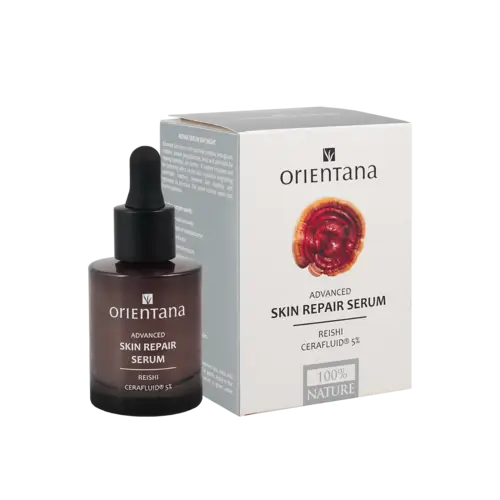
Ceramides in the serum intensively regenerate the skin, providing deep reconstruction and hydration.
How to use ceramide-based products in winter? Layer your skincare routine. Apply a ceramide serum as the first layer, then apply a protective or occlusive cream to enhance hydration and protection. Apply ceramide-based products to slightly damp skin to lock in moisture and maximize their benefits. Use a ceramide serum daily, especially in winter, to provide your skin with ongoing protection.
SQUALANE IN WINTER COSMETICS
Squalane is an essential ingredient in winter cosmetics because it rebuilds the skin's lipid barrier. This ingredient also protects the hydrolipid barrier, moisturizes, and regenerates the skin without weighing it down. Its light consistency and versatility make it suitable for all skin types, including hair. Regular use of squalane in winter helps maintain healthy, moisturized, and supple skin, even in harsh weather conditions.
What is squalane? Squalane is a stabilized form of squalene, a natural lipid found in human sebum. In cosmetics, it is primarily derived from plants such as olives, sugarcane, and amaranth. It is light, non-greasy, and absorbs quickly, making it ideal for all skin types, including oily and sensitive skin.
Why is squalane ideal for winter? It perfectly protects the hydrolipid barrier and strengthens the skin's protective barrier, which is vulnerable to damage from frost and wind in winter.
It reduces transepidermal water loss (TEWL), helping skin retain moisture. It acts as a natural emollient, softening the skin and leaving it silky smooth. It helps retain moisture, which is crucial in dry winter conditions.
Squalane supports skin regeneration, helping repair micro-damage caused by extreme weather conditions. It soothes irritation and redness, which are common in winter. Unlike some oils, squalane does not clog pores, making it suitable for all skin types, including oily and combination skin.
Protective natural ingredients that create a barrier
Cosmetics with plant waxes, such as the Hello Daktyl Comfort Nourishing Cream, are an excellent choice for protecting facial skin in winter. They create a protective layer on the skin's surface that prevents water loss and protects against harmful external factors such as wind, frost, and dry air.
how to care for your skin in winter with natural cosmetics with waxes
Plant waxes are versatile ingredients in winter cosmetics and protective products . Choosing the right wax depends on the product's purpose – some provide durability and shine (like carnauba wax), others soften and regenerate the skin (like jojoba or shea wax). All plant waxes: create a protective film on the skin, protecting it from external factors.
Candelilla wax (INCI: Euphorbia Cerifera (Candelilla) Wax) is a plant-based ingredient derived from the leaves of the candelilla shrub (Euphorbia cerifera). It is valued in cosmetics for its protective, thickening, and sheen-producing properties. It is often used as a plant-based alternative to beeswax, making it popular in vegan products.
Sunflower Wax (INCI Helianthus Annuus (Sunflower) Seed Wax) is derived from sunflower seeds. It has moisturizing and protective properties and helps stabilize the emulsion.
Vegetable wax obtained from acacia flowers (INCI Acacia Decurrens Flower Wax) is valued in cosmetics for its protective, moisturizing, and conditioning properties, as well as its ability to impart a smooth and creamy consistency to products. It creates a thin protective layer on the skin's surface, preventing moisture loss and protecting against harmful external factors such as frost, wind, and pollution.
protective active ingredients - bate-glucan and oat extract
Beta-glucan and oat extract are active ingredients that support the skin's protective barrier thanks to their unique regenerative, protective, and anti-inflammatory properties. These ingredients are particularly effective in winter skin care and for people with skin conditions such as atopic dermatitis, eczema, or hypersensitivity.
Beta-glucan is a polysaccharide obtained primarily from oats, yeast, or fungi. It has protective and regenerative properties. It creates a thin protective layer on the skin's surface, preventing transepidermal water loss (TEWL) and protecting against harmful external factors. It reduces irritation and inflammation, strengthening the protective barrier of sensitive skin. It soothes the skin, which is especially important when it has been damaged, for example, by cold or dry air. It stimulates fibroblasts to produce collagen, strengthening the skin's structure and improving its resilience. It accelerates the regeneration of damaged epidermis.
Oat extract is an ingredient rich in bioactive compounds such as beta-glucan, polyphenols, avenanthramides, and fatty acids. This ingredient significantly improves the skin's protective barrier. Thanks to avenanthramides, it has strong anti-inflammatory and anti-itching properties, reducing redness and irritation. It is ideal for atopic, dry, and sensitive skin. The film-forming compounds it contains create a delicate protective barrier on the skin's surface, limiting water loss. It accelerates the repair of damaged skin barriers. It protects skin lipids and proteins from oxidative stress, strengthening the hydrolipid barrier.
vitamins for winter
Vitamins E, A, and C are a trio that perfectly support winter skin, protecting it from external factors, moisturizing, and regenerating it. Vitamin E is ideal for protection and hydration, vitamin A stimulates skin regeneration and renewal, and vitamin C brightens and protects against oxidative stress. Regular use of these vitamins in your winter skincare routine will help keep your skin healthy, firm, and radiant throughout the season.
Vitamin E (Tocopherol) has antioxidant properties in winter cosmetics. It protects the skin from oxidative stress caused by pollution and UV radiation (including in winter). It retains moisture in the skin, preventing it from drying out. It creates a protective barrier, shielding the skin from the effects of frost, wind, and dry air. It supports epidermal regeneration and soothes irritations. It is often found in protective and regenerative creams.
Vitamin A is found in cosmetics under the INCI names: Retinol , Retinyl Palmitate , Retinoic Acid . Retinol can cause skin sensitization, so in winter, it should be used with moisturizing and protective creams and always use a day cream with SPF. Sensitive skin will prefer Retinol H10, which is a safer form of retinol.
Retinol stimulates cell renewal, improving skin texture. It stimulates collagen production, which increases skin firmness and elasticity. It evens out skin tone and reduces discoloration by gently exfoliating—removing dead skin cells. It's best used as a serum at night.
We can incorporate vitamin C into our winter skincare routine. It's a powerful antioxidant. It neutralizes free radicals, protecting the skin from smog and UV radiation. It has a strengthening effect on the skin. It helps strengthen blood vessels, which is important in winter for people with vascular skin. It's worth using a day serum, brightening creams, or nourishing masks. It's suitable for all skin types, especially dull, tired, and aging skin. Vitamin C brightens the skin, giving it a healthy glow.
cosmetic ingredients that soothe the skin in winter
Winter cosmetics often contain soothing ingredients that not only help protect the skin from harmful external factors (wind, frost, dry air) but also soothe irritations and reduce redness. Such ingredients include allantoin and centella asiatica.
How does allantoin work in winter?
Allantoin is an ingredient valued in cosmetics for its soothing properties, making it an excellent choice for winter facial care. A derivative of urea, it occurs naturally in some plants, such as comfrey. Allantoin soothes irritation and redness caused by cold weather.
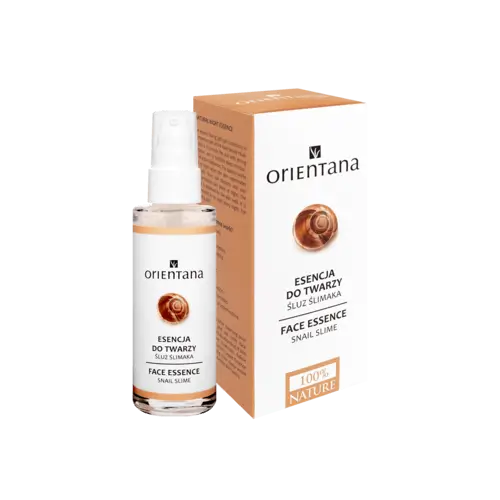
Why is allantoin ideal for winter facial care? Allantoin soothes redness and irritation, which are common in winter due to frost, wind, and dry air. It reduces burning and itching sensations.
It supports the skin's repair processes, accelerating the healing of minor damage that can result from winter conditions. It helps rebuild the skin's protective barrier. It prevents the feeling of roughness, which is particularly bothersome in winter. It creates a delicate protective layer on the skin, shielding it from harmful external factors such as frost, wind, and dry air.
It's suitable for all skin types, including sensitive, dry, and atopic dermatitis. It doesn't cause irritation or allergies, making it safe for even the most demanding skin. You'll find it in the Snail Slime Essence .
soothing properties of centella asiatica
Centella asiatica, also known as gotu kola, cica or tiger grass, is an excellent ingredient in winter cosmetics, which has soothing and anti-inflammatory properties, making it suitable for even the most demanding skin.
Centella asiatica is one of the active ingredients of Reishi Day Cream.
Centella asiatica contains compounds such as asiaticoside and madecassoside, which stimulate collagen synthesis. It helps regenerate epidermal damage caused by frost, wind, and dry air.
It quickly reduces redness, irritation and itching of the skin that often appear in winter, making it ideal for sensitive and atopy-prone skin.
Pennywort helps rebuild the skin's hydrolipid layer, preventing moisture loss and protecting against external factors.
What ingredients to avoid in winter skincare?
Winter skincare requires special attention to avoid ingredients and habits that can worsen skin condition, especially in conditions of low temperatures, wind, and dry air.
In winter skincare, avoid drying and irritating ingredients. Avoid using cosmetics containing alcohol, as it can severely dry out the skin and damage the hydrolipid barrier.
Avoid facial gels and soaps with harsh detergents (e.g., SLS – Sodium Lauryl Sulfate). They strip your skin of its natural lipids, leading to dryness and irritation.
Highly concentrated acids (e.g. AHA, BHA) can excessively exfoliate the skin, which is especially problematic in winter when the skin is more sensitive.
Avoid high doses of retinoids. They can cause redness, peeling, and skin sensitivity to cold.
Menthol, camphor and essential oils in large quantities may cause irritation or a burning sensation.
bad skincare habits in winter
An improper winter skincare routine can have negative effects on our skin.
One mistake is not moisturizing your skin enough. Even oily skin needs hydration in winter to maintain a healthy protective barrier.
A common mistake is to use hot water when washing your face. Hot baths or washing your face with warm water can weaken the hydrolipid barrier, leading to dryness.
Not using sun protection is a serious oversight because UV radiation also acts in winter, especially on snow-covered surfaces, reflecting and intensifying its effect.
Avoiding scarves or face coverings often worsens skin condition. Exposed skin is more susceptible to irritation and redness.
How to choose a winter cream? Look for products with a combination of moisturizing, soothing, and protective ingredients. Avoid denatured alcohol, which can further dry out the skin. Choose creams with a rich consistency that create a delicate protective film on the skin.


